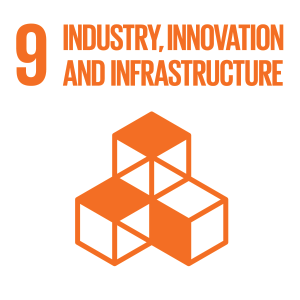Impact Metrics:
We currently operate 19 wind farms and 12 hydro plants, that generated approximately 550 GWh for 2021.
power generation
emissions saved
with clean energy
Aligning with the UN Sustainable Development Goals
All of our business activities have a clear and measurable impact towards the UN SDG’s.
In 2021, our renewable assets saved 222 million tonnes of CO2 emissions and provided the energy needs of approximately 134,000 homes in the UK, equivalent to the city of Leicester.

Yet, as the population continues to grow, so will the demand for cheap energy, and an economy reliant on fossil fuels is creating drastic changes to our climate. Investing in solar, wind and thermal power, improving energy efficiency, and ensuring energy for all are vital actions if we are to achieve SDG7 by 2030.
Expanding infrastructure and upgrading technology to provide clean and more efficient energy in all countries will encourage growth and help the environment.

Technological progress is also key to finding lasting solutions to both economic and environmental challenges, such as providing new jobs and promoting energy efficiency. Promoting sustainable industries, and investing in scientific research and innovation, are all important ways to facilitate sustainable development.
More than 4 billion people still do not have access to the Internet, and 90 percent are from the developing world. Bridging this digital divide is crucial to ensure equal access to information and knowledge, as well as foster innovation and entrepreneurship.

The rapid growth of cities in the developing world, coupled with increasing rural to urban migration, has led to a boom in mega-cities. In 1990, there were ten mega-cities with 10 million inhabitants or more. In 2014, there were 28 mega-cities, home to a total 453 million people.
Extreme poverty is often concentrated in urban spaces, and national and city governments struggle to accommodate the rising population in these areas. Making cities safe and sustainable means ensuring access to safe and affordable housing, and upgrading slum settlements. It also involves investment in public transport, creating green public spaces, and improving urban planning and management in a way that is both participatory and inclusive.

The annual average losses from tsunamis, tropical cyclones and flooding amount to hundreds of billions of dollars, requiring an investment of US$6 billion annually in disaster risk management alone. The goal aims to mobilize $100 billion annually by 2020 to address the needs of developing countries and help mitigate climate-related disasters.
Helping more vulnerable regions, such as land locked countries and island states, adapt to climate change must go hand in hand with efforts to integrate disaster risk measures into national strategies. It is still possible, with the political will and a wide array of technological measures, to limit the increase in global mean temperature to two degrees Celsius above pre-industrial levels. This requires urgent collective action.
The annual average losses from tsunamis, tropical cyclones and flooding amount to hundreds of billions of dollars, requiring an investment of US$6 billion annually in disaster risk management alone. The goal aims to mobilize $100 billion annually by 2020 to address the needs of developing countries and help mitigate climate-related disasters.
Helping more vulnerable regions, such as land locked countries and island states, adapt to climate change must go hand in hand with efforts to integrate disaster risk measures into national strategies. It is still possible, with the political will and a wide array of technological measures, to limit the increase in global mean temperature to two degrees Celsius above pre-industrial levels. This requires urgent collective action.
